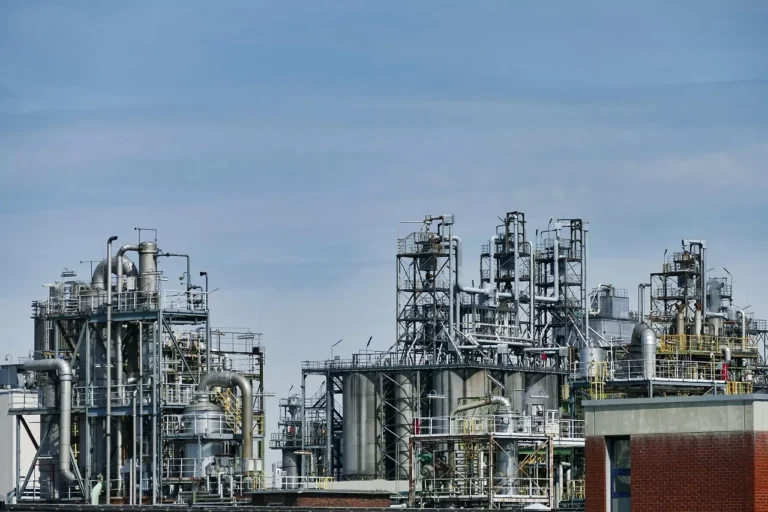
United Energy LNG and Power LNG Merge to Launch Scalable Small-Scale LNG Platform Targeting Underserved U.S. Markets
United Energy LNG and Power LNG announced today the formal execution of a definitive merger agreement that unites their complementary capabilities and assets to create a groundbreaking small-scale liquefied natural gas (LNG) enterprise. Operating under the name United Energy LNG (UE LNG), the newly formed entity will specialize in developing and operating modular LNG production facilities tailored to meet the growing energy needs of industrial, power generation, and transportation markets across North America.
This strategic combination brings together United Energy’s upstream operating acumen and publicly traded capital base with Power LNG’s technical prowess, permitting progress, and pipeline of small-scale LNG projects. The result is a scalable, flexible LNG platform designed to provide decentralized and cost-effective energy solutions to domestic consumers who are often left out of traditional LNG infrastructure planning.
Three LNG Production Sites Already in Development
As of the merger announcement, UE LNG controls a portfolio of three LNG production sites, all in advanced stages of development. These facilities mark the first steps in what the company envisions as a broader national network of modular LNG plants. The first project site, located in Houston, Texas, has officially entered Front-End Loading Phase 1 (FEL-1), representing the beginning of engineering and design work necessary for a final investment decision.
A second project, whose location remains confidential due to competitive sensitivities and active land negotiations, is also advancing through pre-FEL planning. Meanwhile, a third facility located in Independence, Kansas, is slated to begin its FEL-1 process later this month, further extending the company’s geographic reach and market accessibility.
“With these initial projects, we’re not just building facilities — we’re building a distributed LNG platform that brings clean energy directly to the customers and communities who need it most,” said Brian Guinn, Chief Executive Officer of United Energy LNG. “While the majors are focused on billion-dollar megaprojects and overseas export terminals, we’re deploying nimble, modular solutions designed for domestic reliability, speed, and scale.”
Modular Design Meets Localized Demand: A New LNG Model
Unlike conventional LNG megaprojects that often require extensive permitting processes, years of construction, and investments exceeding several billion dollars, UE LNG’s model is built around modular, scalable, and regionally targeted solutions. Each site will deploy small-scale liquefaction units customized for local and regional demand profiles.
This distributed approach delivers several competitive advantages:
- Accelerated Timelines: Modular construction allows for faster permitting and shorter construction cycles, enabling facilities to reach commercial operations within 18–24 months.
- Lower Capital Intensity: Smaller project footprints reduce upfront capital requirements and allow more agile deployment of funds.
- Virtual Pipeline Capabilities: LNG produced at these facilities can be transported by truck or rail, bypassing costly and time-consuming pipeline infrastructure and reaching markets otherwise disconnected from the natural gas grid.
- Flexibility Across Sectors: The scalable nature of each project allows the company to tailor output to industrial, transportation, and power generation users with precision.
“Our mission is to make LNG accessible, flexible, and responsive to modern energy challenges,” Guinn added. “That means going modular, going inland, and bypassing the bottlenecks that have historically plagued centralized energy infrastructure.”
Filling the Gap in U.S. LNG Infrastructure
Despite soaring global investment in LNG — estimated to approach $200 billion annually — the U.S. domestic small-scale LNG market remains significantly underserved. Much of the industry’s capital has been directed at large-scale export terminals catering to international buyers, particularly in Europe and Asia. This has left large swaths of inland America, including rural industrial hubs and remote communities, without practical access to LNG as a clean fuel alternative.
This oversight presents a substantial market opportunity, one that United Energy LNG is poised to address with its differentiated approach.
“There’s a massive gap in the U.S. LNG landscape, and it’s one the majors aren’t equipped to fill,” said Austin Terry, CEO of Power LNG and now President of Operations at UE LNG. “This merger brings together speed, capital, and execution in a way that’s uniquely positioned to capture the opportunity that small-scale LNG represents.”
Merger Synergies and Investment Framework
The merger between United Energy and Power LNG brings a combination of financial, operational, and technical strengths to the forefront. Key metrics and highlights of the newly formed UE LNG include:
- Three Active Development Sites: Houston (TX), Independence (KS), and an undisclosed Gulf Coast location.
- Total Targeted Liquefaction Capacity: Approximately 540,000 metric tons per annum (MTPA) at full build-out.
- Capital Investment Range: An estimated $240–$270 million allocated across the three projects.
- Rapid Revenue Realization: Cash flow is projected to break even within 12–18 months of each facility’s commissioning.
- Strategic Partnerships: Engineering, procurement, and project management relationships are already in place to support execution.
- Public Market Access: As a subsidiary of publicly traded United Energy LNG’s parent company (OTCMKTS: UNRG), the platform is positioned to leverage public capital markets for future growth.
These foundational assets and capabilities enable UE LNG to chart a capital-efficient growth trajectory and attract offtake partners, strategic investors, and customers seeking lower-emission fuel alternatives.
Serving Critical Markets in the Energy Transition
The small-scale LNG platform being developed by UE LNG is tailored to address diverse applications within the broader energy transition landscape. Key market segments include:
- Remote Power Generation: Providing LNG to power plants operating in areas without access to pipeline gas, particularly during peak demand or grid instability.
- Heavy-Duty Transportation and Marine Fueling: Supplying LNG as a cleaner-burning alternative to diesel and marine fuel oil for long-haul trucking and shipping industries.
- Industrial Fuel Switching: Supporting industries such as manufacturing, mining, and agriculture in switching from propane or diesel to lower-emission LNG.
- Critical Infrastructure Resilience: Enhancing fuel security for hospitals, data centers, and military bases by offering distributed LNG solutions that operate independently of central utilities.
“Our customers aren’t waiting for 2035 — they need energy today,” Terry emphasized. “We’re answering that call with infrastructure that’s already under development.”
Path to Commercialization and Nationwide Network
United Energy LNG has set an ambitious roadmap for commercialization. The company expects to reach financial close on its initial three facilities by Q1 2026, followed by full commissioning by Q1 2027. Commercial discussions are already underway with feedgas suppliers, utilities, and logistics providers to create a robust supply chain capable of supporting the company’s long-term growth objectives.
UE LNG is also laying the groundwork for a “virtual LNG pipeline” — a logistics and delivery network that will distribute LNG via truck and rail from its production sites to customers nationwide. This model provides critical flexibility and geographic reach, especially for customers located far from traditional pipeline infrastructure.
According to internal estimates, the addressable market for UE LNG’s services exceeds 2 billion cubic feet equivalent (BCFe) annually, with a total potential market value of more than $3 billion. As regulatory tailwinds and demand for decarbonization accelerate, these figures are expected to rise.










